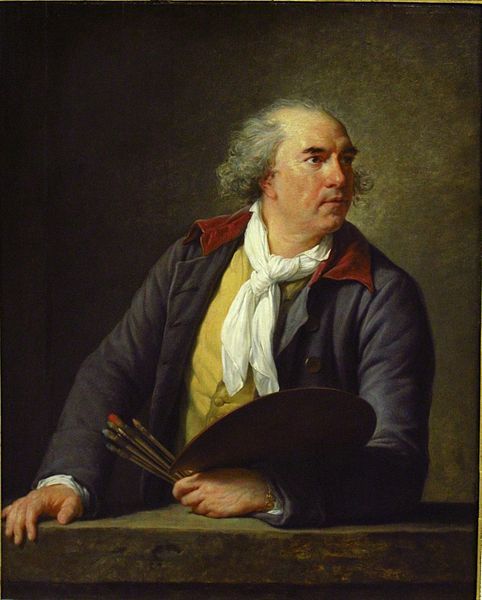Early Life and Influences
Kelly Chou and Sheree Y. Liu
Hubert Robert, known for his grandiose and fantastical paintings of ruins and classical antiquity, was born in 1733 in Paris. His father, Nicolas Robert, and mother, Jeanne Catherine Charlotte Thibault, were both personal assistants to the envoys to the Dukes of Lorraine and Bar under the reign of Louis XV.1 Robert’s classical education was completed under the tutelage of humanist Charles Batteux at the College de Navarre in the rue de la Montagne Sainte-Geneviève from 1745-1749. Robert’s elite, liberal education bolstered his interest in the classics. At the age of twenty-one in 1754, Robert set off for Italy, fulfilling his ambition to extend his studies on Ancient Roman and Greek architecture (link to time in Italy). His travels were also made possible through his connections with the Choiseul family, specifically with Etienne François de Choiseul, the then-French ambassador to Pope Benedict XIV.2
Robert, from an early age, was heavily exposed to the customs and lifestyle of the upper classes. Scholars have noted the ease and formality with which the older Robert communicated with a wide variety of people in influential positions—members of nobility, the clergy, diplomats, ministers, etc.3 Robert’s success and popularity as an artist in his later years were largely due to the generous patronage and connections he made as a young man. His fortunate circumstances placed him at the forefront of receiving the most progressive education at the time and the widest exposure to establishing himself as a successful artist.
KC
______________________________________________________________________________
1 Grasselli, Margaret Morgan, and Yuriko Jackall. “‘That Splendid Fellow Robert’, The Early Years.” Hubert Robert. Washington: National Gallery of Art, 2016, 4.
2Ibid., 5.
3 Grasselli, Margaret Morgan, and Yuriko Jackall. “‘That Splendid Fellow Robert’, The Early Years.” Hubert Robert. Washington: National Gallery of Art, 2016, 2.
